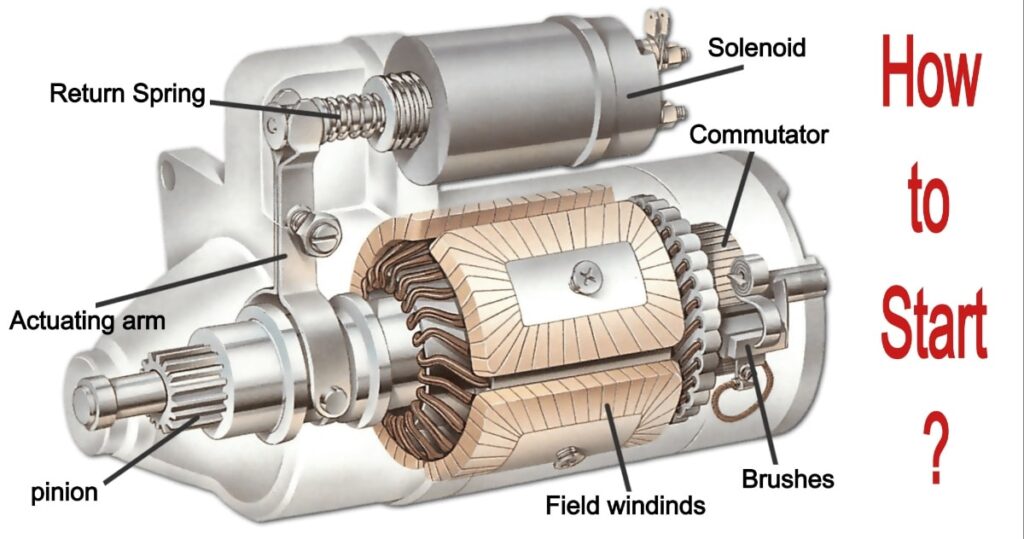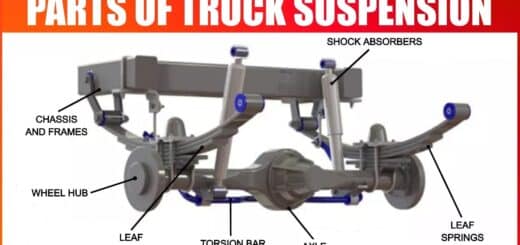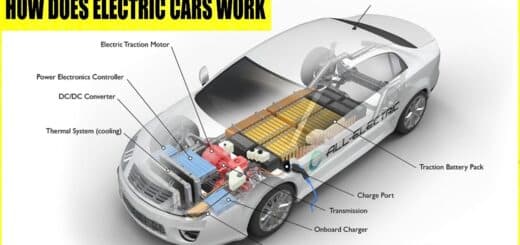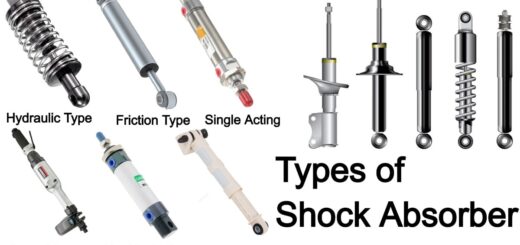How to Work Self Start Mechanism? [Complete Details]

How to Work Self Start Mechanism :- The start system that converts electrical energy from the battery to mechanical energy to turn the engine over (complete Revolution). A malfunction within the starting system will make difficult for engine running.
COMPONENTS OF SELF START SYSTEM (ENGINE)
Ignition switch or start button, a Neutral Safety Switch, Starter Solenoid, Starter Motor, and the Battery (may be used more than one).
1. Neutral safety switch
A neutral safety switch is a device installed on automatic transmission vehicles to ignite the engine. Transmission is in the gear.
2. Starter solenoid
It is electromagnet and primary function is to actuating the starter motor an internal combustion engine with the help of a contractor by which battery is connected to the starter motor.
If solenoid fails, the starter motor wouldn’t work or in other means engine wouldn’t cranks or starts when you turn on the ignition key.
3. Ignition Switch
A switch by means of which the engine of motor valve may be stopped or started.
4. Starter motor
Electrical device that used to rotate crank of the internal combustion engine to initiate the engine operation under the range of its own power (starter motor can be electrically, pneumatically or hydraulically).
WORKING PRINCIPLE (How to Work Self Start Mechanism)
When the ignition key is pressed for self start operation of an engine. Transmission should be park or neutral state. The battery voltage is passed through the starter control circuit to activate the solenoid.
- Starter motor is powered by the solenoid which helps the starter gear forward to engage with the engine flywheel. This flywheel is placed (mounted) over the engine crankshaft.
- As the starter motor spins at it turns the flywheel so as to with the crankshaft, as the engine starts system disengages (release or separate) from the flywheel.
- Note: automatic transmission, starter motor can be operated when vehicle is in park or neutral positions & in manual transmission, clutch pedal must need to be depressed.
SYMPTOMS OF BAD FAILING MOTOR
1. Engine wouldn’t crank or start
This is one of the common signs of motor that occurs it may be due to falling battery, bad ignition switch or engine mechanical problem.
2. Slow cranking
It you notice your engine cranking slowly is mainly of weak battery or internal engine problem.
3. Grinding noise
Grinding noise means the teeth on the starter pinion are damaged.
4. Whirring noise
A whirring is detects when starter pinion gear freewheels during the engine cranking. Pinion gear is not engaging the flywheel properly, which also cause the engine fails to starts.
TROUBLESHOOTING
CAUSE OF FAILURES: A self start system may have the following malfunctioning ways
- Electrical connection faulty.
- Solenoid switch stiff or faulty.
- Single pinion gear, starter pinion or freewheel damaged.
- Electrical motor damaged by electrically.
- Note: a fault free supply of power to the starter is must for its proper function. The vehicle battery & the positive, ground supply of starter devices should be included in fault diagnostics column.













